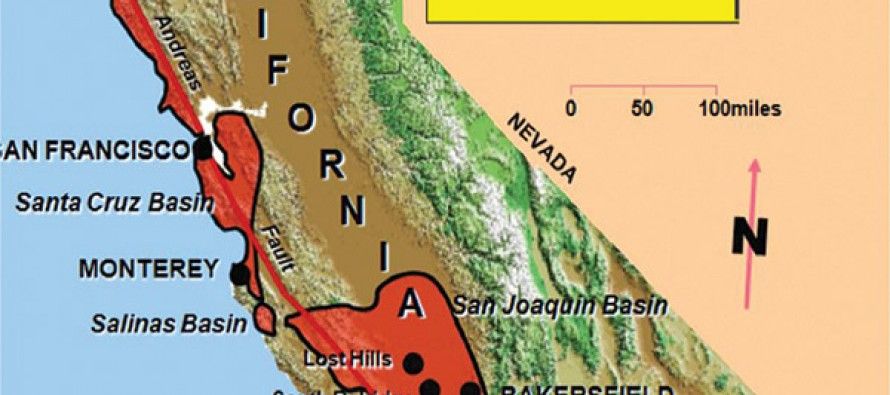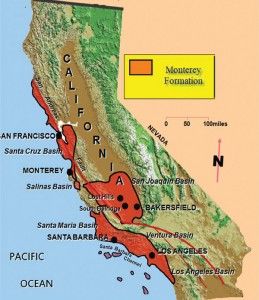Voters affirm CA fracking

 After a lot of spending and acrimony, little has changed from California’s high-profile ballot measures to ban hydraulic fracturing, which injects a mix of substances into shale rock to free up oil for extraction.
After a lot of spending and acrimony, little has changed from California’s high-profile ballot measures to ban hydraulic fracturing, which injects a mix of substances into shale rock to free up oil for extraction.
In two counties with little to no oil drilling — San Benito and Mendocino — anti-fracking measures prevailed. San Benito’s Measure J passed with almost 57 percent of the vote. Mendocino’s Measure S prevailed with 67 percent voting in favor.
In Santa Barbara county, however, where drilling has been well established for over a century, fracking was protected. There, Measure P was defeated by 63 to 37 percent.
Santa Barbara, host to the oil industry since the late 19th century, had the most at stake. In 1969, the county suffered a dramatic offshore oil well disaster that triggered environmental legislation and galvanized the environmentalist movement. Although oil production held on, the industry had to invest substantial sums to fend off the fracking ban.
According to the San Francisco Chronicle, Chevron (headquartered in San Ramon) ponied up $2.6 million to sink the three measures, with Aera Energy adding $2.1 million and Occidental Petroleum another $2 million.
Supporters of the ban raised only a fraction of that.
Political geography
Geography dictated the focus of the fracking debate. The three counties lie on and around the Monterey Shale formation, which winds and twists its way through much of California. The Chronicle reported that “the federal government this year slashed its estimate of the amount of oil that can be squeezed from the shale using current technology,” although “drillers continue probing the formation, saying it could one day yield an economic bonanza for the state.”
As David Quast, California director of the pro-fracking organization Energy in Depth, indicated to Platts, “The U.S. Geological Survey in 1995 estimated that the Bakken Shale in North Dakota contained just 151 million barrels of recoverable oil, only to significantly boost that projection in 2008 to 3-4 billion barrels, and then again doubling it last year.”
Yet, as Platts reported, the U.S. Energy Information Administration announced in May that the Monterey Shale formation was very unlikely to yield a bonanza. Its estimate of “technically recoverable resources” plunged by 96 percent, “from 13.7 billion barrels in a 2012 study to 600 million barrels in a study” released in June.
California at a crossroads
With the split decision by voters in Santa Barbara, San Benito and Mendocino, the legal landscape surrounding fracking has become even more fractured. In Sacramento, as The Huffington Post reported, the state Senate “narrowly voted against a statewide fracking moratorium earlier this year,” while “Santa Cruz County and the city of Los Angeles already have similar bans in place.”
Meanwhile, Gov. Jerry Brown rankled environmentalists last year by supporting legislation that “would allow fracking to continue while lawmakers implemented a specific set of regulations and experts studied its potentially hazardous effects.”
In a further twist, California’s weather has clashed with changing consumer tastes to add a layer of complexity to the fracking debate. Since fracking requires the use of substantial amounts of water, the Golden State’s current drought has intensified the trade-offs associated with its use.
But energy exploration and development have not turned out to be the only culprit in the competition for scarce resources. The burgeoning market for almond milk has pushed the market for California-grown, water-intensive almonds so high the nuts now generate $4 billion a year in revenue, according to the Guardian. Monterey County, where water is also scarce, grows 44 percent of the world’s lettuce.
Kern County, meanwhile, has faced direct competition between Californians’ energy needs and dietary tastes. California’s oil-producing regions have been struggling to make do with current water supplies.
While half of America’s carrot crop and 40 percent of its pistachio crop come from Kern, the Guardian observed, the county’s oil fields are the sixth largest in the United States.
Water vs. oil: It’s an old California battle that will continue.
Related Articles
Trophy train project, legacy for lawmakers
July 9, 2012 By Katy Grimes SACRAMENTO — After listening to two days last week of floor debate in the
Prof. Dr. Schwarzenegger totally doesn’t recall his record
Funding your own Institute entitles you to distort your record. Except with me. Last Friday ex-Gov. and USC Downey Prof.
Vows To Renew Ageless Marriage Battle
NOV. 30, 2010 By WAYNE LUSVARDI Now that California voters on Nov. 2 put a full slate of Democrats into



